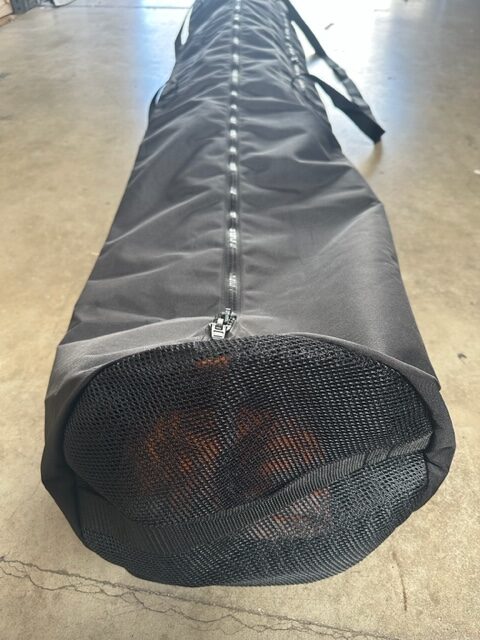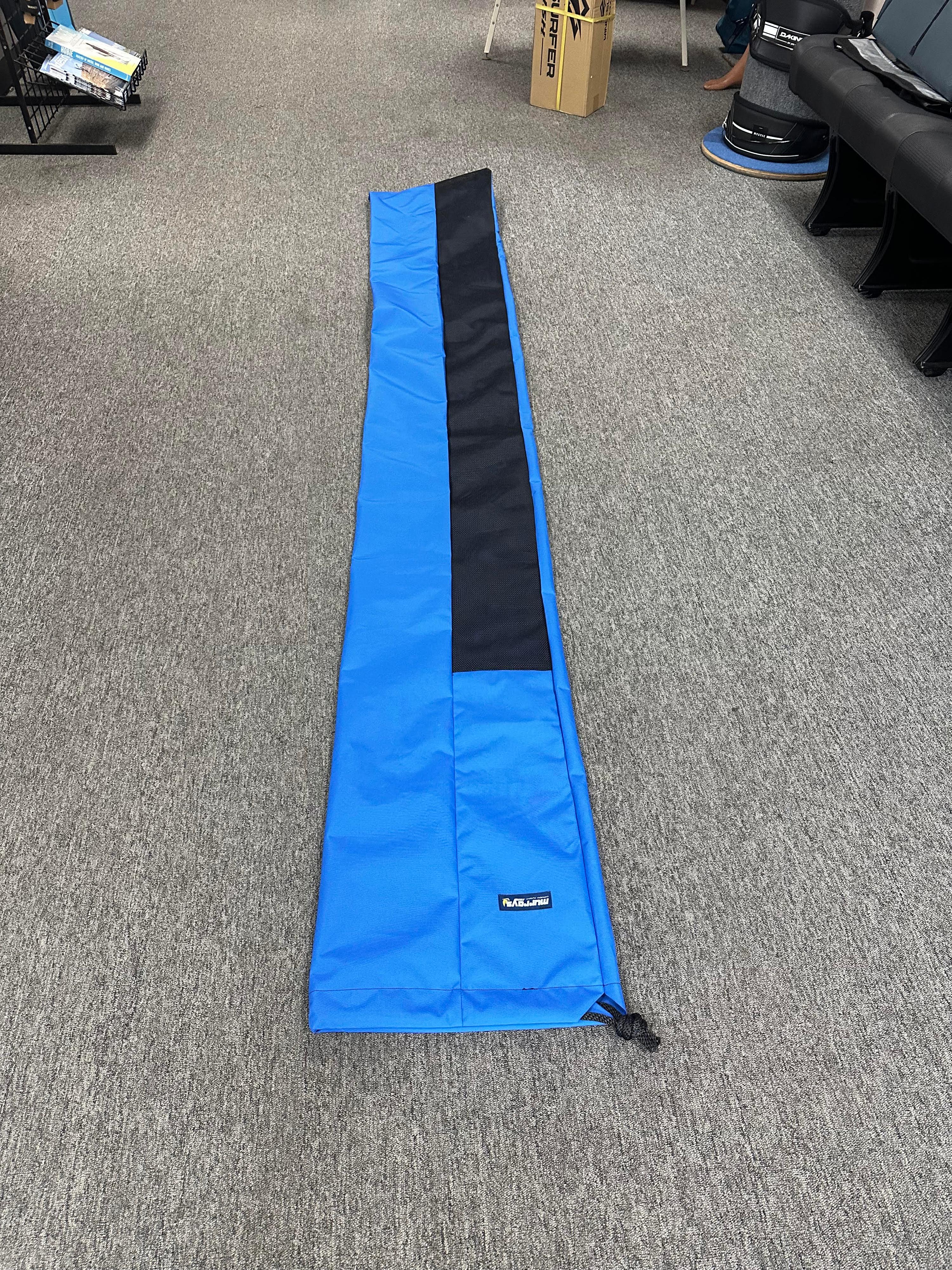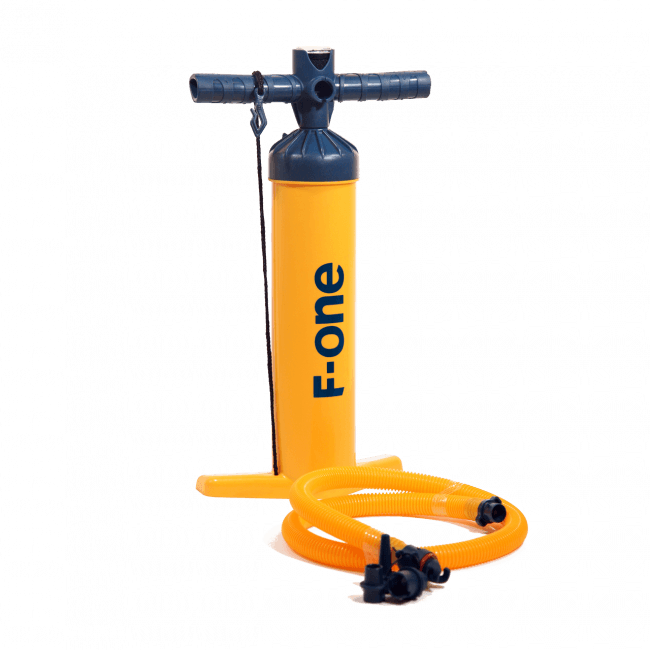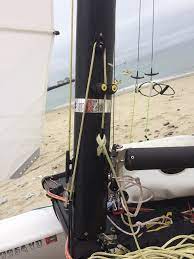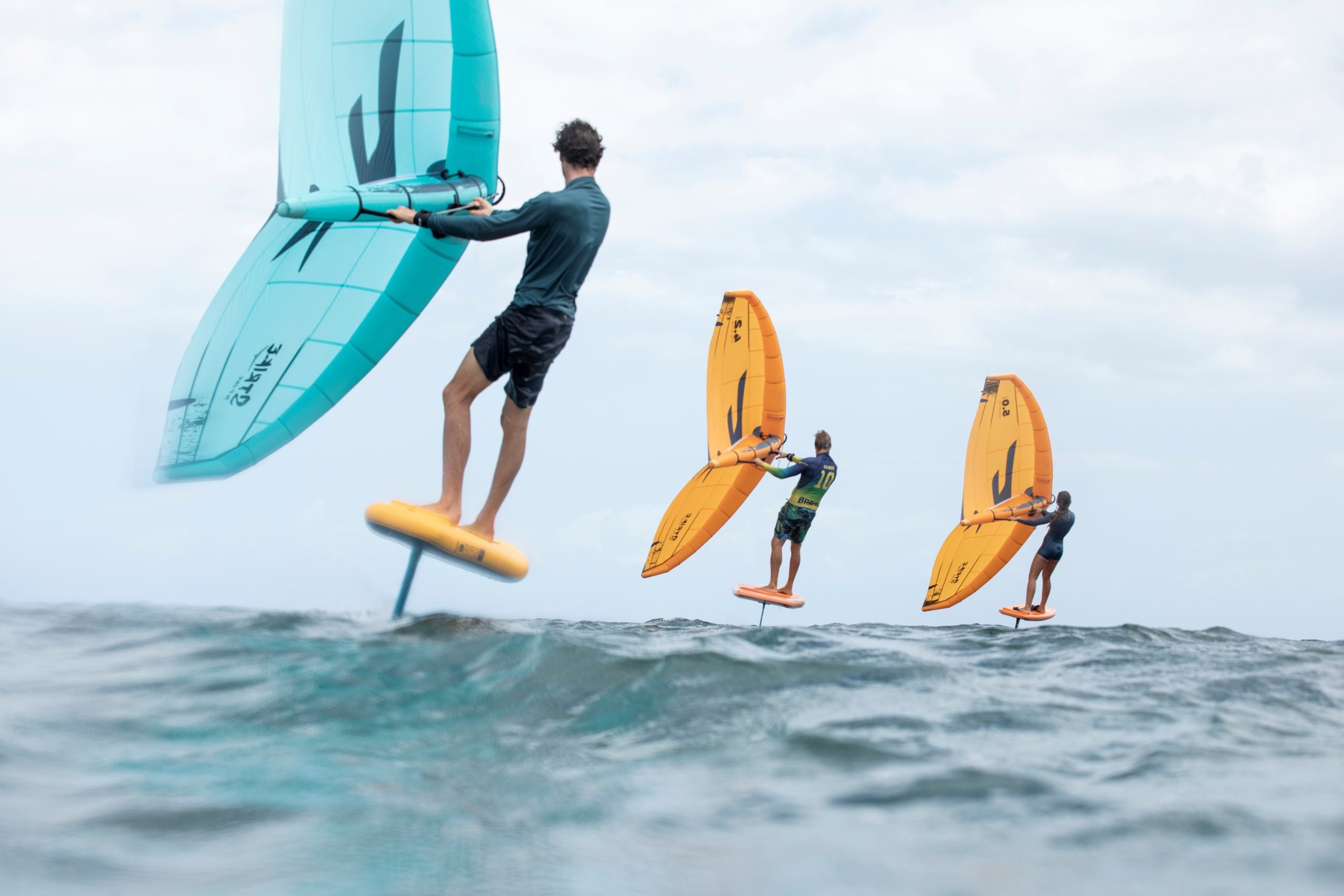H-16 JIB HALYARD TENSION KIT

H-16 JIB HALYARD TENSION KIT
- In stock, ready to ship
- Inventory on the way
H16 Jib Halyard Tension Kit
Murrays Part# 001-3301
The Murrays Hobie 16 Jib Halyard Tension Kit allows sailors to quickly and easily adjust the jib halyard tension while under way. This allows sailors to adjust their mask rake and rig tension to suit the conditions.
The H16 Jib Halyard Tension Kit consists of one cheek block, a cam cleat, with a curved base plate, and the associated rivets with casings and self tapping screws. The kit is meant to supplement the existing cheek block and halyard cleat that are standard on the H16 mast.
Recommendation: put a piece of tape on your halyard and a down haul scale to keep track of your rig tension.
Includes:
- 1 x 25-3340 Cheek Block
- 1 x 28-0150 Aluminum Cam Cleat
- 1 x 21-5016 Curved Base Plate for the Cam Cleat
- 4 x 19-5031S Sealed Stainless steal 3/16" x 1/4" Rounded Pan Head Rivets
- 2 x 19-1624 Self Tapping Screws
- 1 x 01-1019 Halyard Cleat with Rivets
Why use a Jib Halyard Tension Kit?
After we put together this Hobie 16 Jib Halyard tension kit, it opened up a slew of tuning questions regarding mast rake. So we riffled thru our notes from a Blaine Dodds tuning clinic, interviewed Jeff Newsome at the North Americans in Mexico, and practiced rudderless sailing with Tom Sinnickson to get a better understanding of how, when and why we should rake the mast.
At the most fundamental level moving the mast fore and aft has much the same effect as it does in windsurfing. Moving the mast forward from center and it moves the center of effort forward away from the fin and it starts to push the nose of the board down wind, stand it up straight for the most effective sail area and as you bring the mast back (rake the mast) the center of effort comes back loads and it turns the board upwind.
This is also similar to rudderless sailing, which is a fun practice and one that can help you better understand what drives the boat upwind and downwind which can really help prevent rudder cavitation during mark rounding and can help when you need to come into the beach with your rudders up. To steer downwind without the rudders keep the jib in and start letting out the main, and to steer upwind you loosen the jib and keep the main in tight. Without rudders a sailboat without a jib will want to steer into irons. The jib, being the sail forward of the mast pulls the front of the boat downwind, so it is good to keep the jib in when rounding the weather mark to help drive the boat down wind. It's also good to keep the jib trimmed when you need to sail off the wind in shallow water when you can't use your rudders. Keeping the jib trimmed will prevent the boat from rounding up into the wind without your rudders. As you let out the jib the main takes the center of effort back towards the rear of the boat and begins to drive the boat upwind. This is useful when rounding the downwind mark to start letting out the jib before the main to drive the center of effort back, into the rudders and aid them in turning upwind.
Ok, so all that is to say moving the mast fore and aft affects the boat and it performance. Now back to adjusting the mast rake on a Hobie 16. With a jib halyard adjustment system you can only move the mast at the top about a foot, so we have a limited adjustment range on the water. You can adjust it further, but it will take moving the shroud mounting positions, which can be done on shore. So You can set your range at the beach and make smaller fine turning adjustments on the fly from the water.
The next question is when to adjust the mast rake. Most of the adjusting should be done with the shroud adjusters on each side while on the beach to suit the conditions. Keep the mast vertical for light wind and rake it back in high wind. Then as you hit the water you will be able to fine tune it thru the adjustment system. The theory here is more mast rake in heavy winds because it depowers the sail slightly and helps you point upwind and less rake for more power in light winds. Dodds likes to rake in really light wind, then go straight up from single to double trap weather and then start raking as needed to maintain speed and direction in strong winds. Newsome skips the light wind bit and just starts to rake in anything over comfortable double trap weather.
Point of sail is another reason to rake. This is all handled on the water with the forestay adjustment system. The general theory being less rake downwind for more speed, and more rake for better pointing upwind. This may be a moot point, if you are driving well and don't want to mess with it, don't, and that typically happens in single to double trap weather. But if you are looking for speed in light winds it could get you a few extra boat lengths or more on each leg when done right.

